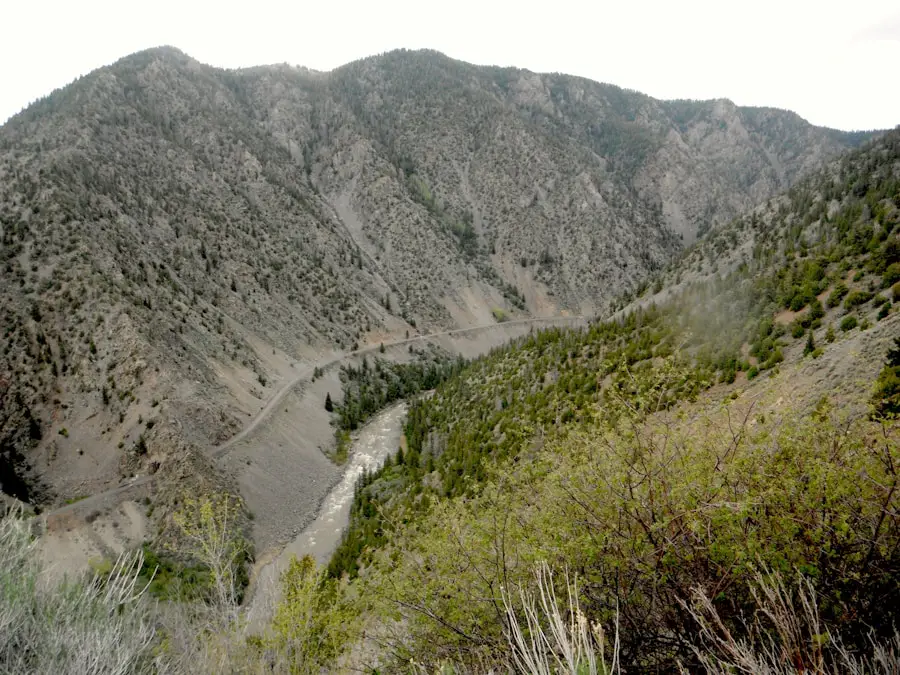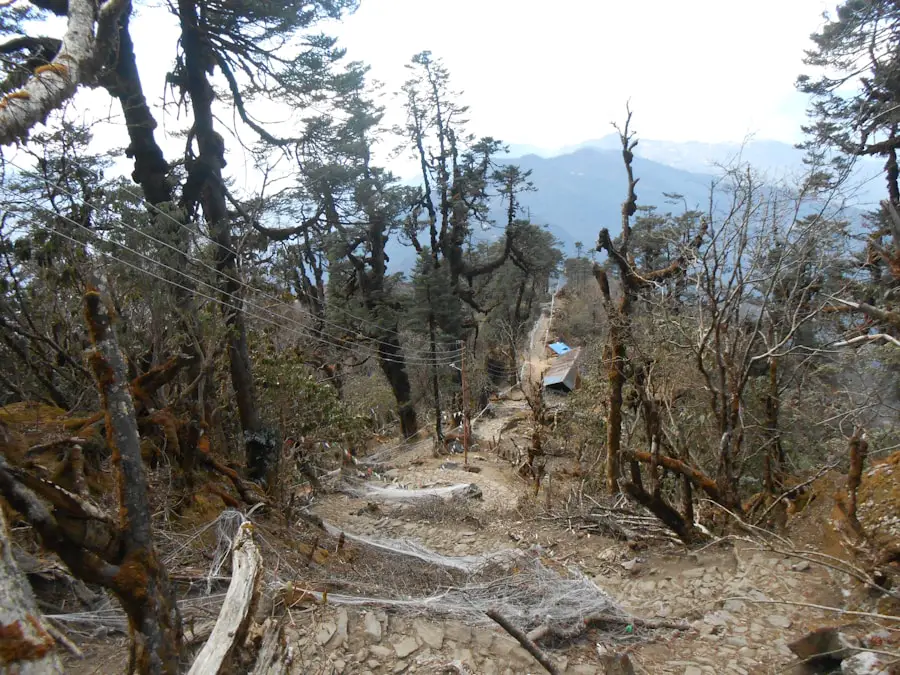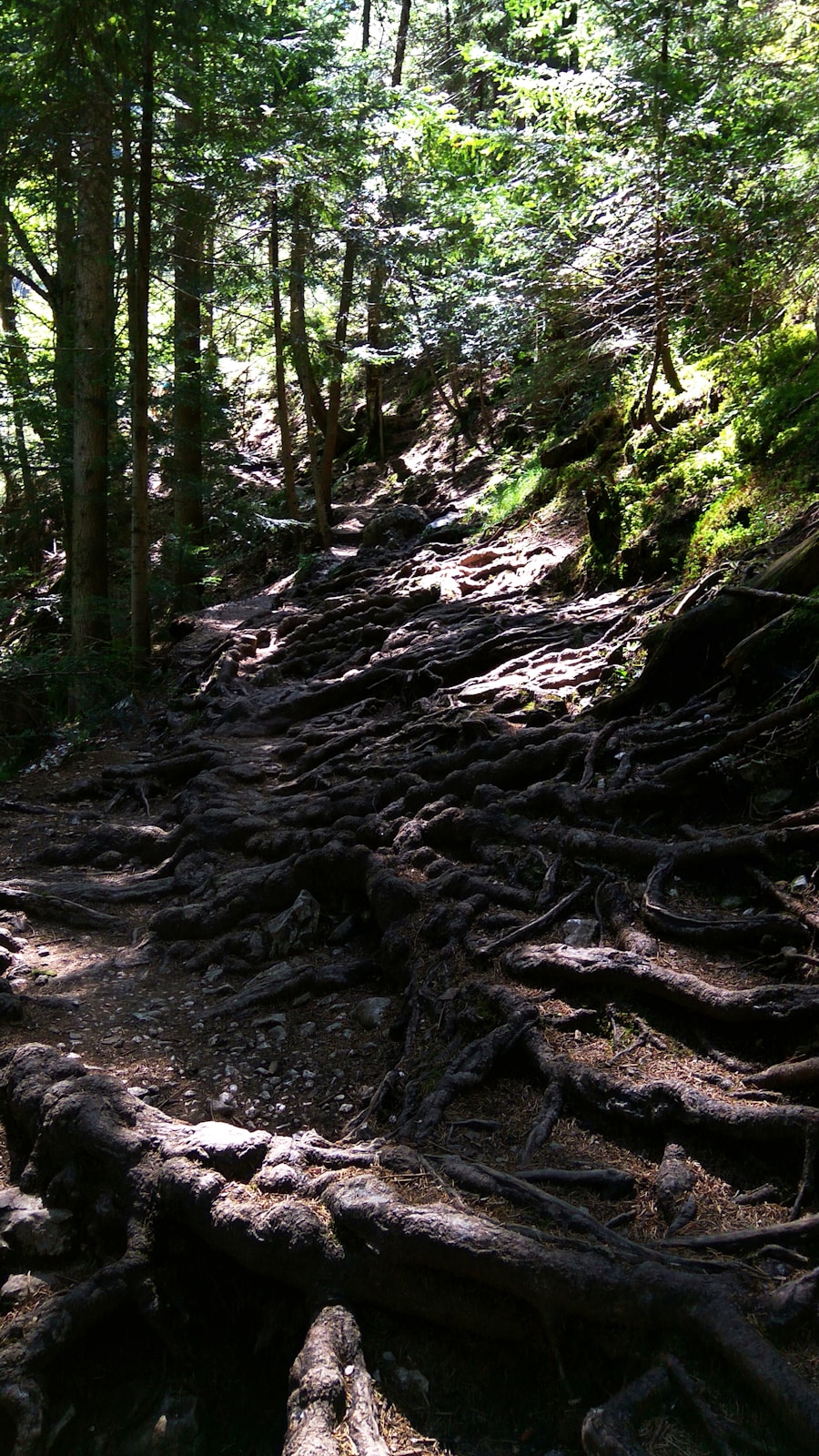Switchbacks are a common feature in hiking trails, particularly in mountainous or hilly terrains. These zigzagging paths ascend steep slopes by creating a series of sharp turns, allowing hikers to gain elevation without the exhausting effort of climbing straight up. The design of switchbacks is not merely a matter of convenience; it is a carefully considered approach to trail construction that balances the need for accessibility with the challenges posed by the natural landscape.
The term “switchback” itself evokes images of winding roads and trails that snake their way up hillsides, providing both a practical solution for hikers and an aesthetic experience as they navigate through diverse environments. The history of switchbacks can be traced back to ancient civilizations that recognized the need for efficient pathways in rugged terrains. Early engineers and trail builders understood that a direct ascent could lead to erosion, trail degradation, and increased difficulty for travelers.
By implementing switchbacks, they created routes that were not only easier to traverse but also more sustainable in the long run. Today, this age-old technique remains relevant, as modern trail designers continue to utilize switchbacks to enhance the hiking experience while minimizing environmental impact.
Key Takeaways
- Switchbacks are a common feature on hiking trails, especially in mountainous terrain, and are designed to help hikers navigate steep slopes more easily.
- The purpose of switchbacks on hiking trails is to reduce the steepness of the trail, prevent erosion, and minimize environmental impact.
- Using switchbacks on hiking trails provides benefits such as reducing erosion, preserving vegetation, and making the trail more accessible and enjoyable for hikers.
- Switchbacks can have a positive environmental impact by reducing erosion, preserving vegetation, and minimizing the disturbance to wildlife habitats.
- Designing and building switchbacks requires careful planning to ensure they are effective, sustainable, and safe for hikers to use.
The Purpose of Switchbacks on Hiking Trails
The primary purpose of switchbacks is to facilitate a gradual ascent or descent on steep terrain. When faced with a steep incline, hikers often find themselves struggling against gravity, which can lead to fatigue and increased risk of injury. Switchbacks alleviate this challenge by breaking the climb into manageable segments, allowing hikers to ascend at a more comfortable angle.
This design is particularly beneficial for those who may not be in peak physical condition or who are carrying heavy backpacks, as it reduces the strain on muscles and joints. Moreover, switchbacks serve an essential role in trail sustainability. By redirecting foot traffic along a winding path rather than a straight line up a slope, they help to minimize soil erosion and vegetation damage.
When hikers take a direct route up a hill, the concentrated foot traffic can lead to significant wear on the landscape, resulting in ruts and bare patches that can take years to recover. Switchbacks distribute this impact over a larger area, allowing the ecosystem to maintain its integrity while still providing access to stunning vistas and natural wonders.
Benefits of Using Switchbacks

The benefits of switchbacks extend beyond mere convenience; they also enhance the overall hiking experience. One of the most significant advantages is the opportunity for hikers to enjoy varied perspectives as they ascend. Each turn in a switchback often reveals new views of the surrounding landscape, whether it be sweeping valleys, distant mountains, or unique geological formations.
This visual stimulation can make the journey more enjoyable and rewarding, transforming what might otherwise be a monotonous climb into an engaging adventure. In addition to aesthetic benefits, switchbacks can also improve safety on trails. Steep inclines can be treacherous, especially in wet or icy conditions.
By providing a gentler slope, switchbacks reduce the likelihood of slips and falls, making trails more accessible for hikers of all skill levels. Furthermore, the design allows for better drainage, as water can flow off the trail more effectively than on a straight ascent. This drainage capability is crucial in preventing muddy conditions that can lead to further erosion and hazardous footing.
Environmental Impact of Switchbacks
| Environmental Impact | Switchbacks |
|---|---|
| Soil Erosion | Reduces soil erosion by minimizing the steepness of the trail |
| Vegetation Damage | Minimizes damage to vegetation by creating a gradual ascent or descent |
| Water Runoff | Helps to control water runoff and prevent trail degradation |
| Wildlife Habitat | Preserves wildlife habitat by reducing disturbance to the ecosystem |
While switchbacks offer numerous advantages for hikers and trail sustainability, their construction and use also come with environmental considerations. The process of building switchbacks often involves altering the natural landscape, which can disrupt local ecosystems and wildlife habitats. Careful planning is essential to ensure that trails are designed with minimal impact on flora and fauna.
Trail builders must consider factors such as soil composition, vegetation types, and animal migration patterns when determining the best route for switchbacks. Moreover, even well-designed switchbacks can contribute to erosion if not properly maintained. Over time, foot traffic can compact soil and wear down vegetation along the edges of the trail, leading to increased runoff during rainstorms.
This runoff can carry sediment into nearby waterways, affecting water quality and aquatic life. To mitigate these impacts, trail maintenance crews often implement erosion control measures such as installing water bars or planting native vegetation along the trail’s edges. These practices help preserve the integrity of both the trail and the surrounding environment.
Designing and Building Switchbacks
The design and construction of switchbacks require a thoughtful approach that balances functionality with environmental stewardship. Trail designers typically begin by assessing the terrain and identifying areas where switchbacks would be most effective. Factors such as slope steepness, soil type, and existing vegetation all play a role in determining the optimal layout for a switchback trail.
Designers aim for a gentle grade—typically no steeper than 10-15%—to ensure that hikers can navigate the trail comfortably. Once the design is established, construction begins with careful clearing of vegetation along the proposed path. This process must be done judiciously to minimize ecological disruption while ensuring that the trail remains safe and accessible.
Builders often use natural materials such as rocks and logs to create retaining walls or steps along the switchback, which helps stabilize the trail and prevent erosion. Additionally, proper drainage features are incorporated into the design to manage water flow effectively and reduce wear on the trail surface.
Safety Tips for Hiking on Switchback Trails

Awareness and Communication
The winding nature of switchbacks can create blind spots where other hikers may be approaching from around a bend. To avoid collisions or accidents, it’s advisable to communicate with fellow hikers—especially when ascending or descending steep sections—and to yield the right of way when necessary.
Pacing and Hydration
The gradual incline of switchbacks may encourage hikers to push themselves harder than they would on a flat surface; however, it’s crucial to listen to your body and take breaks as needed. Hydration is also vital; drinking water regularly helps prevent fatigue and keeps energy levels up during long hikes.
Footwear and Traction
Additionally, wearing appropriate footwear with good traction can significantly reduce the risk of slips on uneven or rocky surfaces commonly found on switchback trails.
Popular Hiking Trails with Switchbacks
Many renowned hiking trails around the world feature switchbacks as a key component of their design. One such example is the famous Angel’s Landing Trail in Zion National Park, Utah. This challenging hike includes numerous switchbacks known as Walter’s Wiggles, which lead climbers up a steep cliffside before reaching breathtaking panoramic views of Zion Canyon.
The combination of stunning scenery and exhilarating elevation gain makes this trail a favorite among adventurous hikers. Another notable example is the Inca Trail in Peru, which features several sections of switchbacks as it ascends toward Machu Picchu. The trail’s design allows trekkers to navigate steep Andean slopes while enjoying views of ancient ruins and lush landscapes along the way.
The use of switchbacks not only enhances accessibility but also adds an element of historical significance to this iconic route.
Embracing the Challenge of Switchbacks
Switchbacks are more than just a practical solution for navigating steep terrain; they represent an intersection of engineering ingenuity and appreciation for nature’s beauty. As hikers embrace these winding paths, they embark on journeys that challenge their physical limits while offering opportunities for connection with the environment around them. Whether traversing well-known trails or exploring hidden gems off the beaten path, understanding the purpose and benefits of switchbacks enriches the hiking experience.
As outdoor enthusiasts continue to seek new adventures in nature, it is essential to recognize the importance of sustainable trail design and maintenance practices that protect our natural landscapes for future generations. By respecting these principles while enjoying switchback trails, hikers contribute to preserving the beauty and integrity of our wilderness areas—ensuring that these remarkable pathways remain accessible for all who seek them out.
If you’re interested in learning more about hiking and outdoor gear, you may also want to check out this article on the best ultralight tent for backpacking. This article provides valuable information on lightweight and durable tents that are perfect for backpacking trips. Switchbacks are often encountered on steep trails, so having the right gear, such as a reliable tent, can make your hiking experience more enjoyable and comfortable.
Love travel? Join Our Facebook Community
FAQs
What is a switchback in hiking?
A switchback in hiking is a technique used to traverse steep or rugged terrain by creating a zigzagging trail that ascends or descends gradually, reducing the overall steepness of the trail.
Why are switchbacks used in hiking?
Switchbacks are used in hiking to make steep or rugged trails more manageable and sustainable. They help to reduce erosion, minimize the impact on the environment, and make the trail safer and more accessible for hikers.
How do switchbacks benefit hikers?
Switchbacks benefit hikers by making it easier to navigate steep terrain, conserving energy, and reducing the risk of slips and falls. They also provide hikers with a more gradual and enjoyable hiking experience.
Are switchbacks only used for ascending trails?
No, switchbacks can be used for both ascending and descending trails. They are a versatile technique for navigating steep or rugged terrain in both directions.
What are some tips for hiking switchbacks?
When hiking switchbacks, it’s important to stay on the designated trail to minimize environmental impact. Hikers should also take their time, use proper footwear, and be mindful of their footing, especially on steep sections of the trail.
